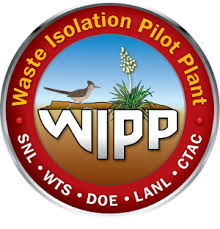The Waste Isolation Pilot Plant (WIPP) is located in southern New Mexico. It is the only underground nuclear waste repository in the U.S. It is intended primarily for waste generated in research and construction of nuclear weapons. The U.S. General Accounting Office just issued a report that the U.S. Energy Department is not required to develop a corrective action plan for addressing the root causes of the challenges at the WIPP. The report states that there is no way of knowing if cost increases and missed construction deadlines will continue at the WIPP.
A multimillion-dollar project is underway at the WIPP to install a new ventilations system. When completed, full operations can resume. After a release of radioactive materials in 2014, the WIPP was closed for three years. Then operations were throttled back because parts of the facility were still contaminated, and airflow was reduced.
Federal officials have claimed that the construction project will ensure that the WIPP can meet the Energy Department’s need to dispose of tons of Cold War-era waste left behind by decades of bomb making and nuclear research. However, the GAO report stated that the Energy Department faces construction and regulatory risks that might delay its schedule.
According to Energy Department documents, the ventilation project was estimated to cost about half a billon dollars. This is seventy percent over the original estimate. The project is also about three years behind schedule. The new estimation for the completion date is January 2026. The Energy Department had blamed significant cost overruns on the inexperience of the contractor and problem attracting workers to the area which is an expansive desert that is also home to one of the most productive oil fields in the world.
While some corrective measures were taken, Energy Department officials told the GAO that they have not updated an internal system that is meant to track risks and mitigation measures. Without regular updates from the internal system, Energy Department officials may not be able to meet their disposal schedule. This could result in shipping delays and cost increases for the sites that are generating the waste.
The report repeated that the WIPP is running out of space for waste and that the Energy Department has a large amount of “transuranic waste.” This typically consists of lab coats, rubber gloves, tools and debris contaminated with plutonium and other radioactive elements from sites around the country that are still waiting for disposal.
The WIPP was excavated out of an ancient salt formation about half-mile below the surface. The facility was constructed with the understanding that the shifting salt around the depository would eventually entomb the radioactive waste.
The current layout includes eight large rooms known as panels. The Energy department estimates that these will be filled by 2025. There are plans to excavate two new panels in the near future. The report noted that it is unclear whether the new space will be ready in time to prevent an interruption of disposal operations.
New Mexico regulators have yet to approve permit changes and other requests from the Energy Department. It is not clear how long this will take.
Responding to the GAO report, Energy Department officials agreed with the recommendations aimed at addressing the root causes of the cost increases and construction delays to ensure that “that DOE projects benefit taxpayers while reducing the risk to human health and the environment.”
Nuclear watchdog groups have been very critical of the Energy Department. They have voiced concerns about the future of the WIPP. They cite the increase in defense-related waste that will need to be disposed of when production of key components for the country’s nuclear arsenal ramps up at the Los Alamos National Laboratory in New Mexico and the Savannah River Site in South Carolina.
